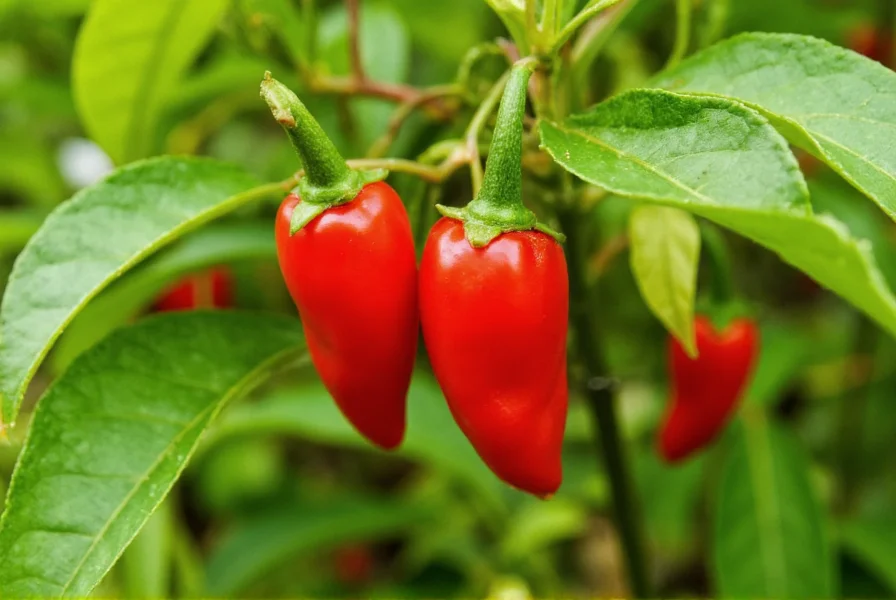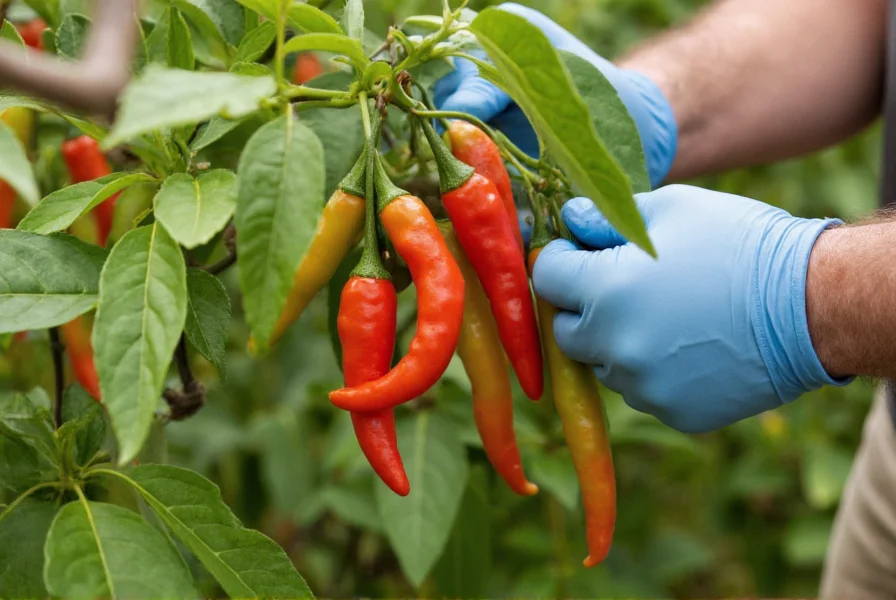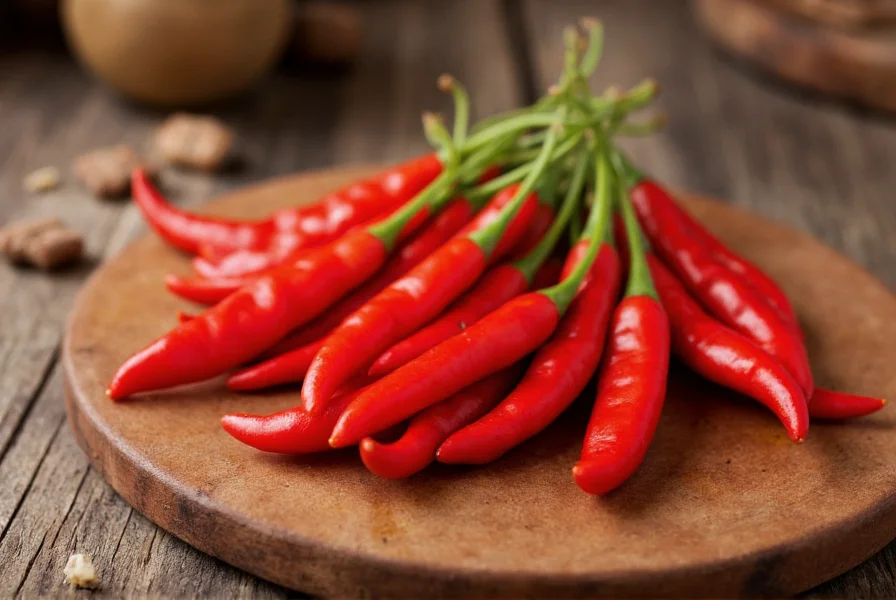The Bhut Jolokia, or ghost pepper, represents one of nature's most intense culinary experiences. This legendary chili pepper first gained international attention when it was officially recognized as the world's hottest pepper by Guinness World Records in 2007, a title it held until 2011. Understanding this remarkable pepper requires examining its origins, heat measurement, cultivation requirements, and safe handling practices.
Origin and Historical Significance
Contrary to popular belief that it originated in Bhutan ("Bhut" means Bhutanese in Assamese), the Bhut Jolokia actually comes from the Assam region of Northeast India, along with neighboring Nagaland and Manipur. Local communities have cultivated and used this pepper for centuries, primarily for culinary purposes and traditional medicine. The name "ghost pepper" derives from the Assamese word "bhut," meaning ghost, as the intense heat seems to sneak up on you like a ghost.

Measuring the Heat: Scoville Scale Analysis
When discussing how hot is bhut jolokia compared to other peppers, the numbers are staggering. The Bhut Jolokia averages 1,041,427 Scoville Heat Units (SHU), with individual peppers ranging from 855,000 to 1,463,700 SHU. To put this in perspective:
| Pepper Variety | Scoville Heat Units | Comparison to Bhut Jolokia |
|---|---|---|
| Bhut Jolokia (Ghost Pepper) | 855,000-1,463,700 | 1x (baseline) |
| Habanero | 100,000-350,000 | 3-8x milder |
| Jalapeño | 2,500-8,000 | 100-400x milder |
| Cayenne | 30,000-50,000 | 20-35x milder |
| Trinidad Moruga Scorpion | 1,200,000-2,000,000 | Slightly hotter |
Researchers at New Mexico State University's Chile Pepper Institute confirmed these measurements through high-performance liquid chromatography (HPLC), the scientific standard for capsaicinoid measurement. While newer varieties like the Carolina Reaper now surpass it, the Bhut Jolokia remains significantly hotter than most commercially available peppers.
Physical Characteristics and Flavor Profile
Beyond its legendary heat, the Bhut Jolokia offers a complex flavor profile often overlooked. Mature peppers typically measure 2.4-2.8 inches long with a bumpy, irregular shape and ripen from green to a vibrant red, though orange and chocolate varieties also exist. The initial taste reveals a sweet, fruity flavor with subtle smokiness that quickly gives way to intense heat.
This dual-phase experience explains why experienced chili enthusiasts appreciate ghost pepper culinary uses beyond mere heat challenges. Chefs use it sparingly in chutneys, hot sauces, and specialty dishes where its distinctive flavor can shine through the heat.
Successful Bhut Jolokia Cultivation
For gardeners interested in bhut jolokia growing conditions, this pepper requires specific care. As a tropical plant native to Northeast India's humid climate, it needs:
- 8-10 hours of direct sunlight daily
- Consistent temperatures between 75-90°F (24-32°C)
- High humidity levels (60-80%)
- Well-draining, slightly acidic soil (pH 6.0-6.8)
- Approximately 110-120 days to maturity from seed
Successful growers recommend starting seeds indoors 8-10 weeks before the last frost, using bottom heat to maintain soil temperature around 85°F (29°C). The extended growing season makes it challenging to cultivate in cooler climates without greenhouse support. One critical tip for bhut jolokia cultivation tips is to avoid overwatering, which can reduce capsaicin production and increase disease susceptibility.

Safe Handling and Culinary Applications
Proper safety measures are essential when working with safely handling bhut jolokia chili. The extreme capsaicin concentration can cause severe skin irritation, respiratory issues, and eye damage. Always follow these precautions:
- Wear nitrile gloves (latex won't protect against capsaicin)
- Use protective eyewear when cutting or processing
- Work in well-ventilated areas to avoid inhaling capsaicin particles
- Never touch your face while handling
- Wash all tools and surfaces thoroughly afterward
For culinary use, start with minuscule amounts—often just a few drops of infused oil or a tiny piece of pepper. The heat builds gradually, so patience is crucial. Popular applications include:
- Ghost pepper jelly paired with cream cheese
- Specialty hot sauces with vinegar and fruit bases
- Infused oils for controlled heat addition
- Curry dishes where heat is balanced with coconut milk
- Chutneys that combine heat with sweet and sour elements
Common Misconceptions
Several myths surround the Bhut Jolokia. Despite claims that it's the world's hottest pepper, it has been surpassed by varieties like the Carolina Reaper and Pepper X. Another misconception is that is bhut jolokia the hottest pepper naturally occurring—while extremely hot, it's not the absolute hottest. Additionally, many believe all ghost peppers are identical in heat, but significant variation exists between plants and even between peppers on the same plant.
Health Considerations
While moderate chili consumption offers potential health benefits, the Bhut Jolokia's extreme heat requires caution. Consuming large amounts can cause severe gastrointestinal distress, including nausea, vomiting, and abdominal pain. In rare cases, it may trigger more serious reactions like temporary stomach lining damage or breathing difficulties. People with gastrointestinal conditions should avoid superhot peppers entirely.
Frequently Asked Questions
How hot is the Bhut Jolokia compared to a jalapeño?
The Bhut Jolokia averages 1,041,427 Scoville Heat Units, making it approximately 100-400 times hotter than a jalapeño, which ranges from 2,500-8,000 SHU. You would need to eat 100-400 jalapeños to match the heat of one average Bhut Jolokia pepper.
Can you grow Bhut Jolokia peppers in a home garden?
Yes, you can grow Bhut Jolokia peppers in a home garden if you provide the right conditions: 8-10 hours of direct sunlight, temperatures between 75-90°F, high humidity, and well-draining slightly acidic soil. Start seeds indoors 8-10 weeks before the last frost, and be prepared for a long growing season of 110-120 days.
What should I do if Bhut Jolokia gets on my skin?
If Bhut Jolokia contacts your skin, immediately wash the area with soap and cold water. Avoid warm water as it opens pores and increases absorption. Apply milk, yogurt, or a solution of baking soda and water to neutralize the capsaicin. Wear gloves when handling superhot peppers to prevent this issue.
Why is it called ghost pepper?
The Bhut Jolokia is called ghost pepper because 'bhut' means ghost in Assamese, and the intense heat seems to sneak up on you like a ghost. Despite the name suggesting Bhutanese origin, the pepper actually comes from Northeast India's Assam region.
How can I use Bhut Jolokia safely in cooking?
To use Bhut Jolokia safely in cooking, always wear gloves when handling, start with minuscule amounts (a few drops of infused oil or tiny pieces), and remember that the heat builds gradually. Remove seeds and membranes to reduce heat, and pair with dairy products like yogurt or cheese which contain casein that neutralizes capsaicin.











 浙公网安备
33010002000092号
浙公网安备
33010002000092号 浙B2-20120091-4
浙B2-20120091-4